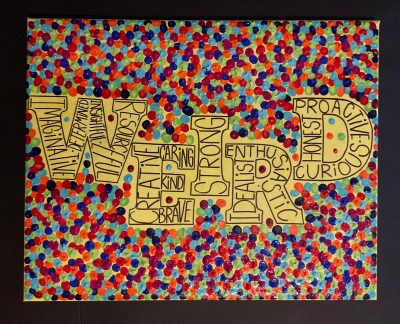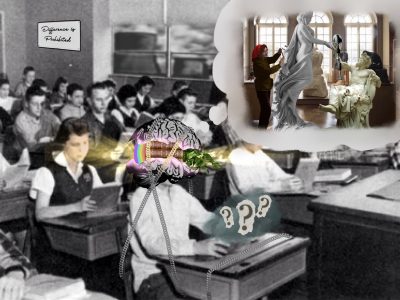Neurodiversity Module
Welcome to the Neurodiversity Module page on our Neurodiversity at UConn website. Here
you will find a video presentation by Connie Syharat introducing you to the subject of
neurodiversity, some introductory readings on neurodiversity, a current version
of the I-Standards: the framework we use to make our courses more inclusive, and
examples of student artwork from our UNIV 1810: Neurodiversity
in Engineering Learning Community.
Neurodiversity Basics
This video will present a brief overview of the INCLUDE program, an introduction to neurodiversity, and a brief discussion about how a strengths-based approach may enhance the learning experience of neurodivergent students. Download the transcript.
Key Readings
Neurodiversity and the Social Ecology of Mental Functions by Robert Chapman
 Loading...
Loading...
Neurodiversity in higher education: a narrative synthesis by Lynn Clouder et al.
Neurodiversity at work: a biopsychosocial model and the impact on working adult by Nancy Doyle
 Loading...
Loading...
Standards
The I-Course Standards Framework was developed to guide the course redesign process of the CEE INCLUDE Working Group during the summer of 2020. The CEE INCLUDE Working Group collaborated with educational design coaches, experts from the Center for Excellence in Teaching and Learning, and faculty from the Neag School of Education to create these standards for our I-Courses.
I-Courses are anchored by a commitment to a Strength-based Approach and centered around three core course features: Culture of Inclusion, Teaching and Learning, and Instructional Design.
Strengths-based Approach
Studies of strength-based initiatives in higher education settings show that exposure to a strengths-based interventions can produce immediate positive short-term effects including increases in confidence, self-efficacy and learning breakthroughs (Louis, 2011). By incorporating awareness of student and faculty strengths into teaching and learning, it is hoped that I-Courses may enhance engagement, motivation, and persistence in the face of challenges (Schreiner, 2014).
Culture of Inclusion
Course instructor builds a culture of inclusion by:
- communicating their commitment to inclusion via a written or verbal statement to students
- learning more about cognitive and other forms of diversity through workshops, readings, or other professional development opportunities
- connecting with their students and/or otherwise encouraging a sense of belonging
Teaching & Learning
Course instructor carefully considers ways to encourage student motivation and engagement by:
- providing opportunities for active learning
- building in some elements of flexibility or choice that allow students to personalize their education to meet their learning needs and preferences
- providing multiple modes of feedback and communication to students about their learning
Instructional Design
Course instructor undertakes a design process that:
- centers students as stakeholders in the educational experience
- provides scaffolding and/or other supports for student learning
- follows principles of Universal Design to make the course accessible to all types of learners
Click below to see the latest version of our I-Standards:
I-Course Standards
 Loading...
Loading...
Student Views of Neurodiversity

Figure 1: Photo by Yamila M. Garcia for the final project in the first iteration of UNIV 1810: Neurodiversity in Engineering.

Figure 2: Photo by Stephanie Hernandez Rodriguez for the final project in the first iteration of UNIV 1810: Neurodiversity in Engineering.
Learn More:
To learn more about the experiences of neurodiverse students in college, please check out the videos at the bottom of this page on CETL's website. There you will find videos on the Autistic and ADHD experience of college students, along with the experiences of students with anxiety and depression.